How to track and manage the stock location and flow
Maintaining and managing stock items can be a nightmare depending on how big and widespread your business is. Sometimes the process itself can be very confusing to keep track of where stock comes and goes. This whitepaper will assist with the understanding on how the stock behaves in TimeTrak.
In MYOB Exo by default, we can see there is Physical, Not for Sale, Committed, Back Order, Incoming and Free Stock.
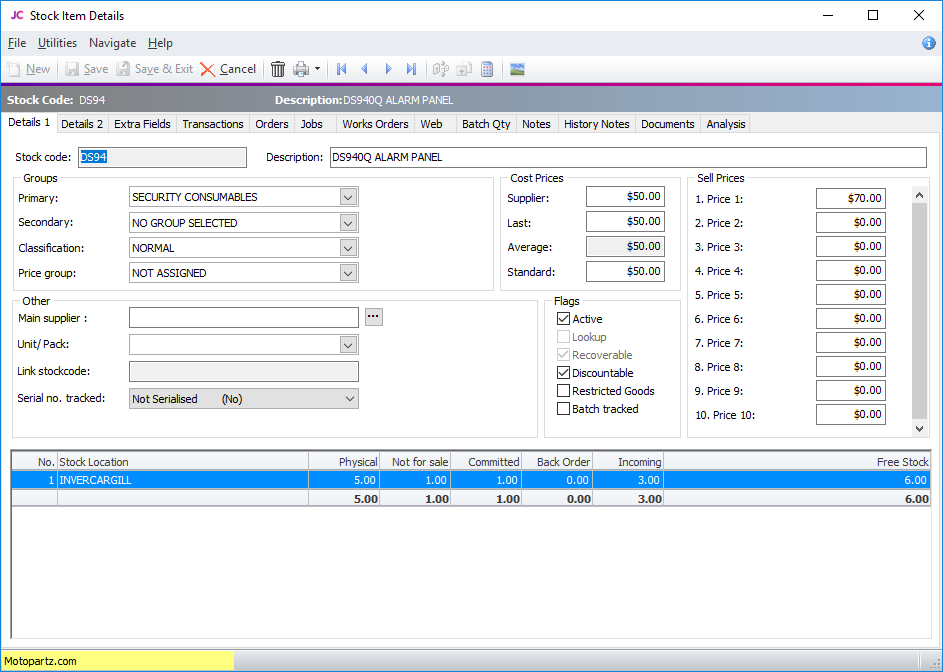
- Physical – This is the quantity of physical items that are currently available in your warehouse location at the time for sales purposes.
- Not for Sale – This is the quantity of stock items that have been assigned against jobs in TimeTrak but haven’t been posted to job costing yet. In many businesses, it’s possible that some stock items are consumed on the job but haven’t been invoiced or processed for payment. In TimeTrak, this is shown as the “assigned” column.
- Committed – This is the quantity of stock items that have been committed to sales order(s). TimeTrak does not have sales order functionality.
- Back Order – This is for stock items where a sales order has been created but there is no physical stock available. Exo will prompt that the stock item doesn’t have any quantity and ask if this is to be entered as back order.
- Incoming – This number is based on the quantity of items assigned to purchase orders not yet receipted.
- Free Stock = (Physical + Incoming) – Not for Sale – Committed
Not for sale and Committed put a negative value into the free stock.
TimeTrak Relationship with Stock Items
As TimeTrak also effects stock items in Exo, here are some items to remember:
1. When assigning a disbursement in TimeTrak, the quantity assigned will display under the “Not for Sale” column until it is posted from TimeTrak to Job Costing.
The initial state of stock is shown below.
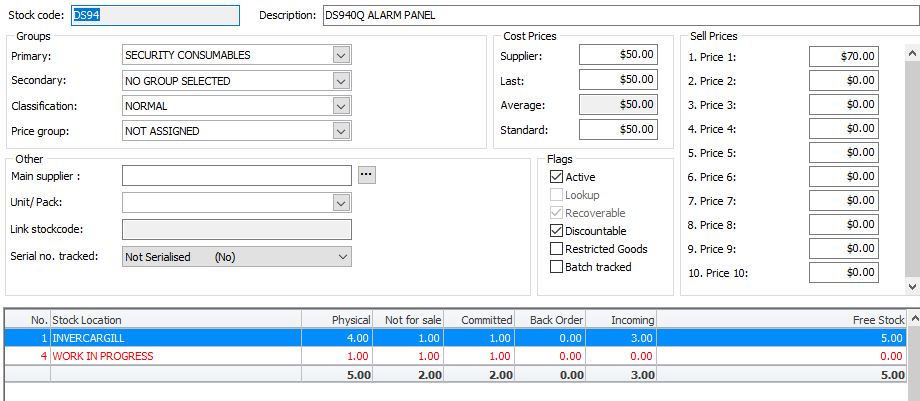
Add a stock item to the job – In this example 3 items of stock have been added increasing the Not For Sale count from 1 to 4.
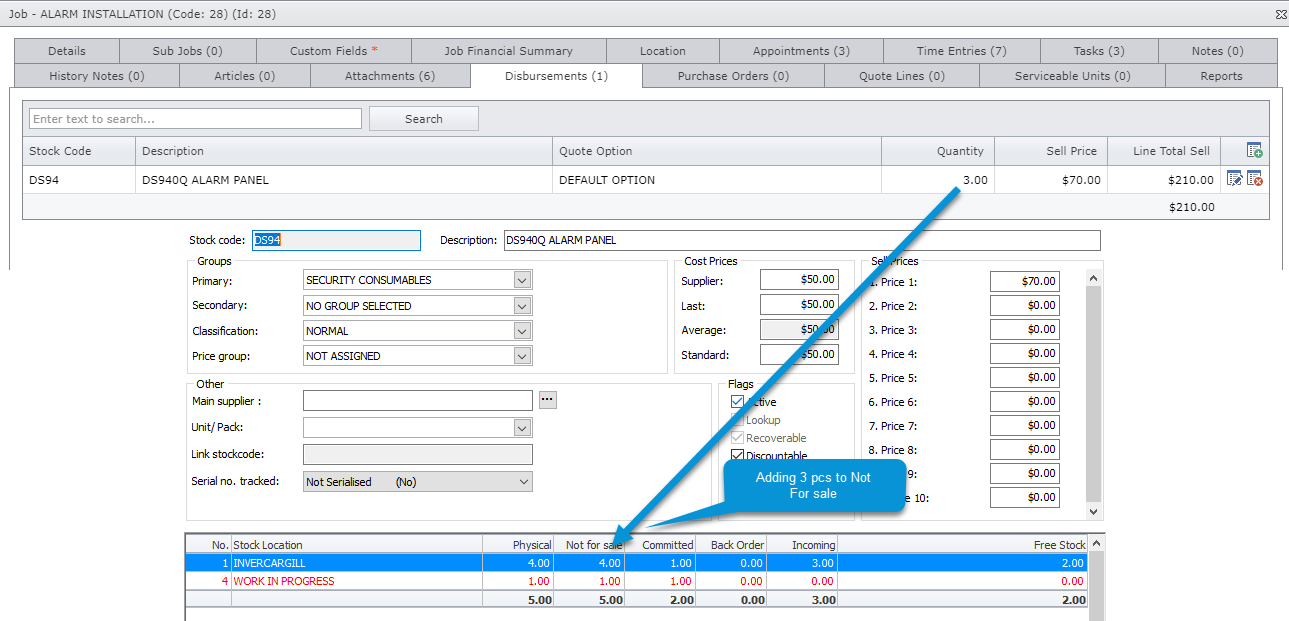
2. When the job is posted from TimeTrak with stock items on it, this then creates a stock transaction and moves the stock from the assigned stock location to the job costing “Work in Progress” stock location for billing.
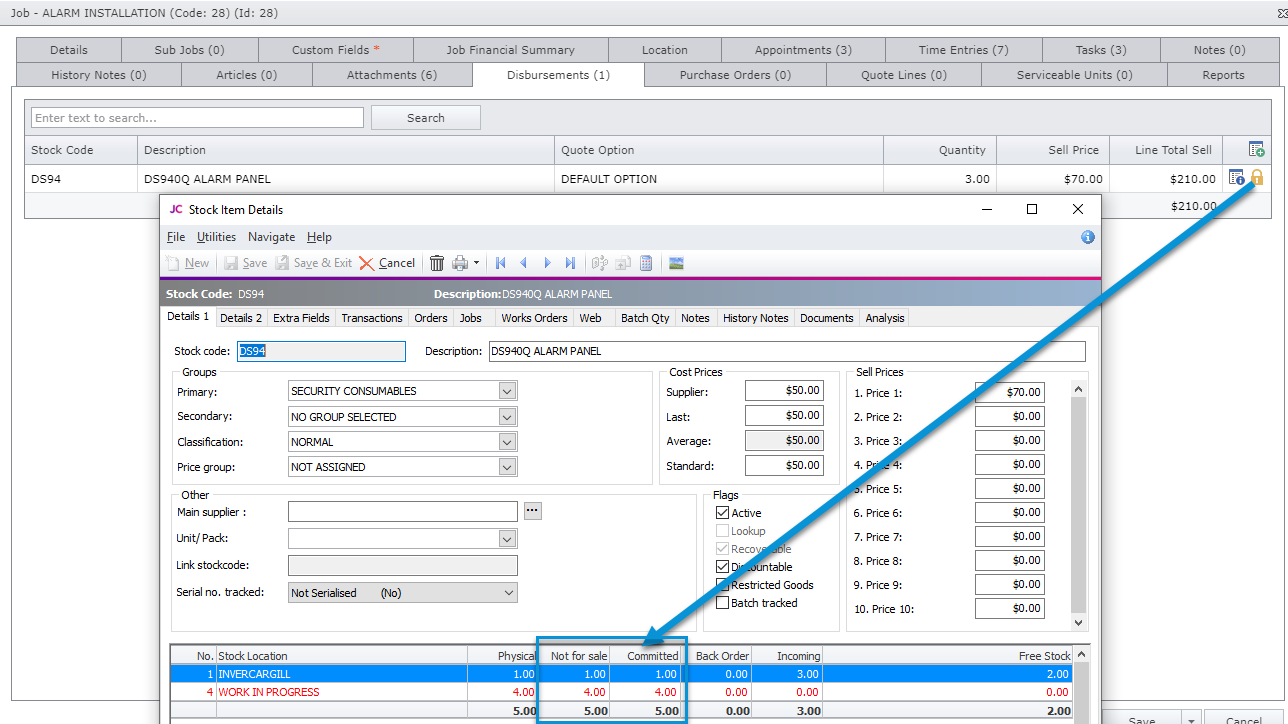
3. When the disbursement has been invoiced the “WIP” (Work In Progress) Physical count will reduce.
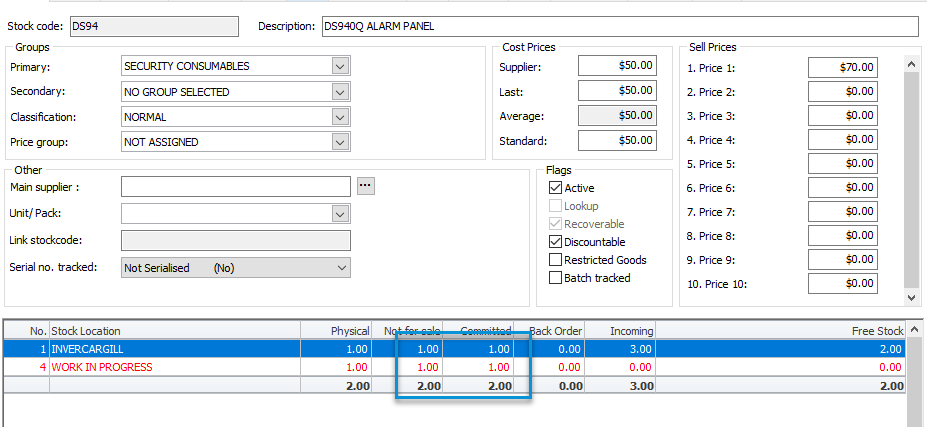
4. The ability to check stock items, using the search engine, is only available in TimeTrak Mobile.

5. The stock locations available for the user to see are dependent on the stock locations the user has access to.
In the below example, the user “Bridget” has access to all stock locations excluding Christchurch (Auckland being her default stock location).

This means when searching a stock item in TimeTrak Mobile, as per below, she is able to see the stock levels of all stock locations excluding Christchurch.

This also means, on assigning stock, the default stock location for Bridget is going to be Auckland.
However, the other stock locations that are assigned to Bridget can be selected from as per below:
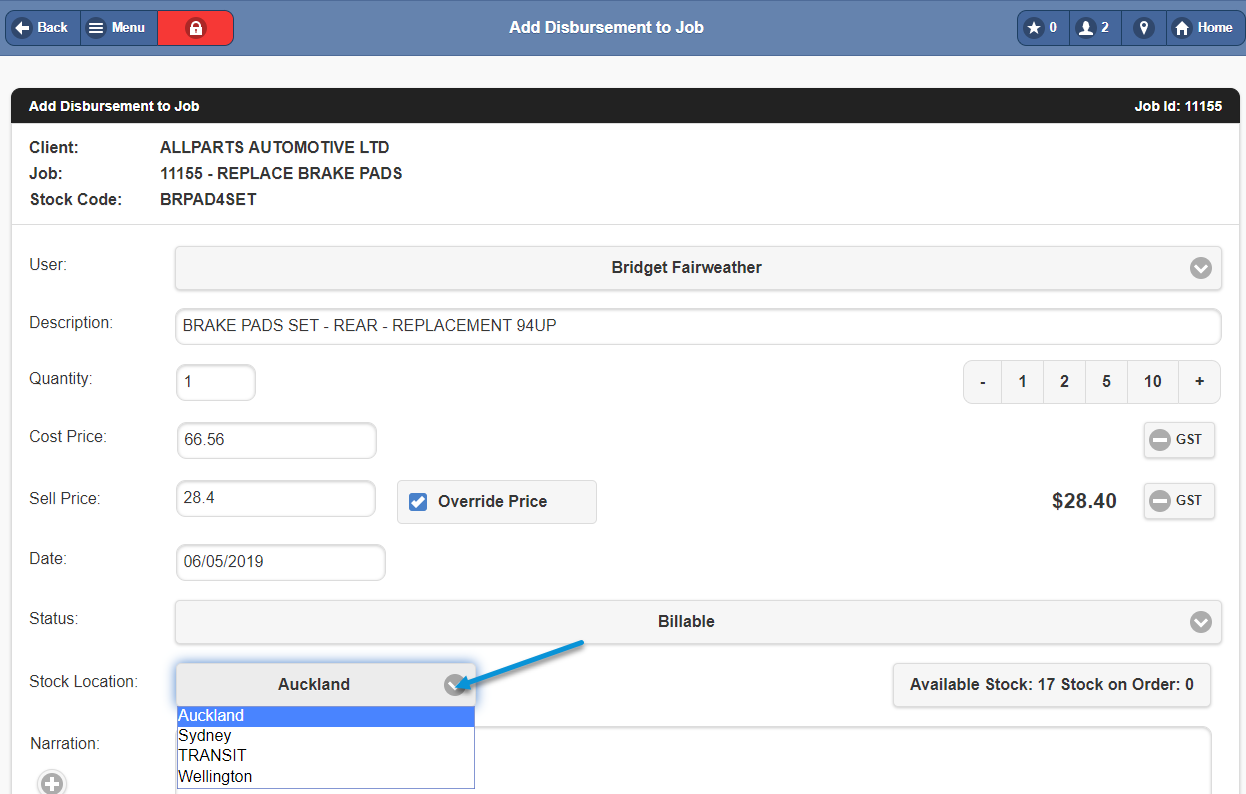
The information that can be seen above (stock cost and sell price etc) is driven by the users profile “Form Layout” against disbursements as per below.
If you did not want this information to be available (i.e. stock cost price) this field could be “hidden” below and all users against the profile will no longer be able to access the stock’s cost price.

6. Purchase Orders created in TimeTrak will be generated against the jobs branch and the default stock location of the TimeTrak user as per below:
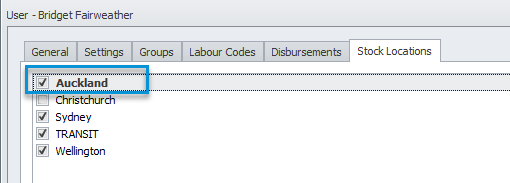
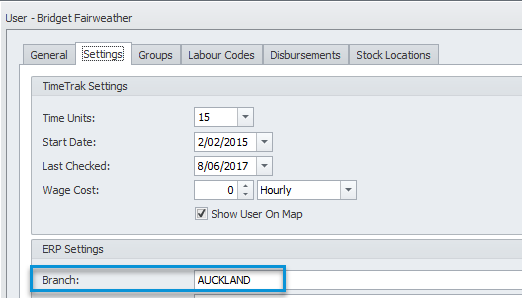
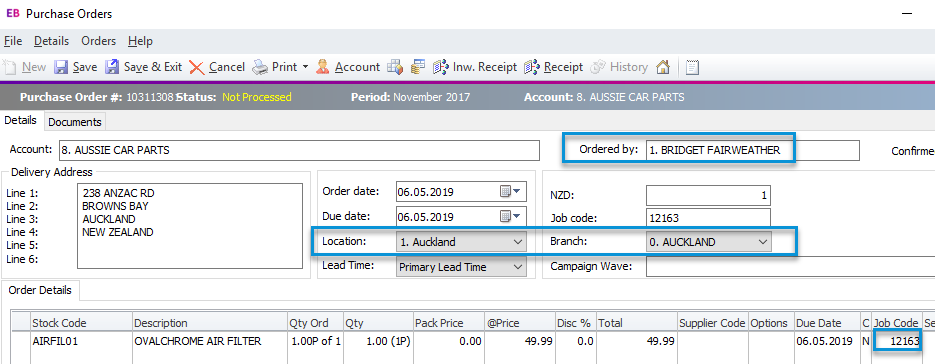

For more information on purchase orders in TimeTrak, click here.
7. Stock assigned in Job Costing is not available to review in TimeTrak.
As per below, If admin assigns stock directly to a job:

This is unable to be seen in either TimeTrak Mobile or Professional websites by default.
Note: We do have customisation available from version 19.1 that can display stock assigned directly in job costing as “posted” disbursements in TimeTrak.


8. By default, stock is called “Disbursements”. In TimeTrak this can be renamed on a database level to something that is more relevant to your business and users; for example “Parts” or “Stock” as per below:
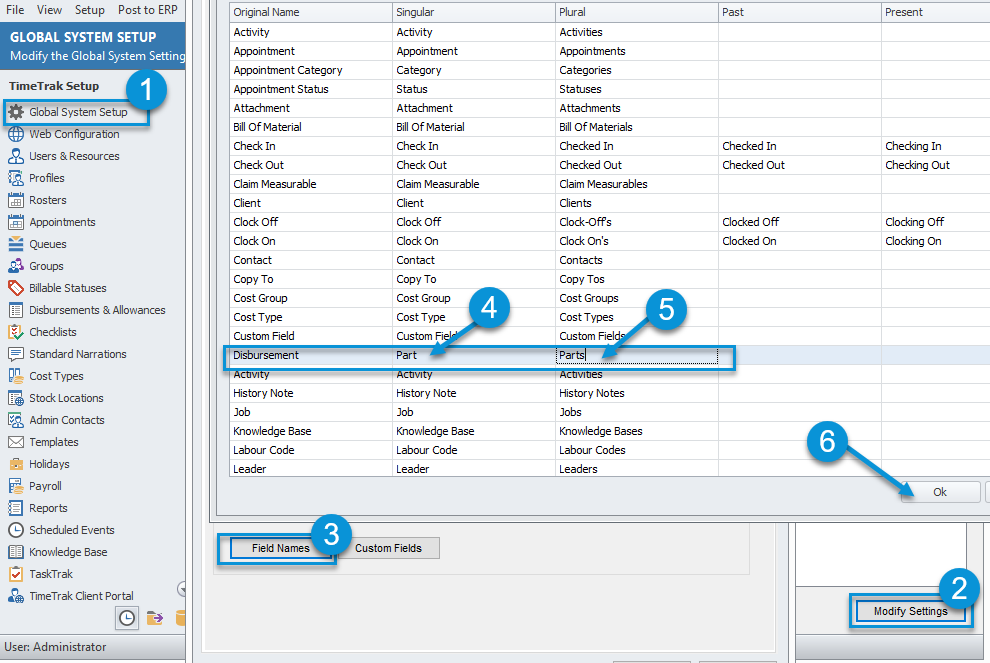
9. If your business uses “Van Stock” and field users should only be able to see and assign stock that they have available in their “van stock” location there is a profile setting as per below which allows this.
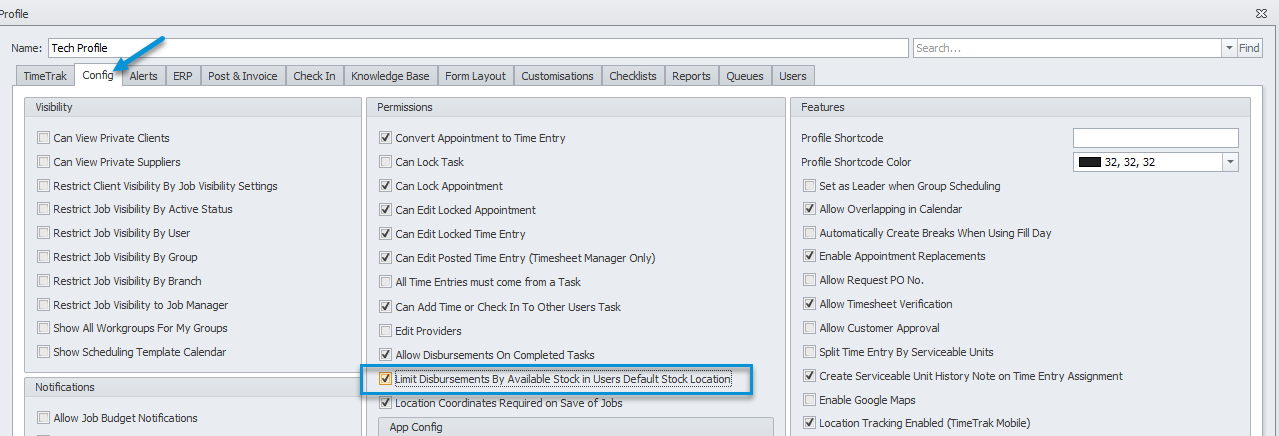
For more information on this, click here.
10. If your users also need to assign a certain stock item or item(s) to a job every time they enter time this is also possible in TimeTrak using “Pre-loaded” disbursements.
For more information on this, click here.
11. If your business has call out fees, where for example, if the user spent less than half an hour onsite a “minimum charge” should be billed, this is also possible in TimeTrak using “Minimum Charge”
For more information on this, click here.
12. Within TimeTrak there is also standard reporting available to display Disbursements (Stock) Assigned in TimeTrak.
Note: There is the ability to create custom reports based on your requirements.
Disbursement Report
Allows users to report upon a disbursement assigned in TimeTrak per TimeTrak group/ users over a specified date range:

Disbursements by User
Allows users to report upon disbursements assigned in TimeTrak per TimeTrak group/ users over a specified date range:
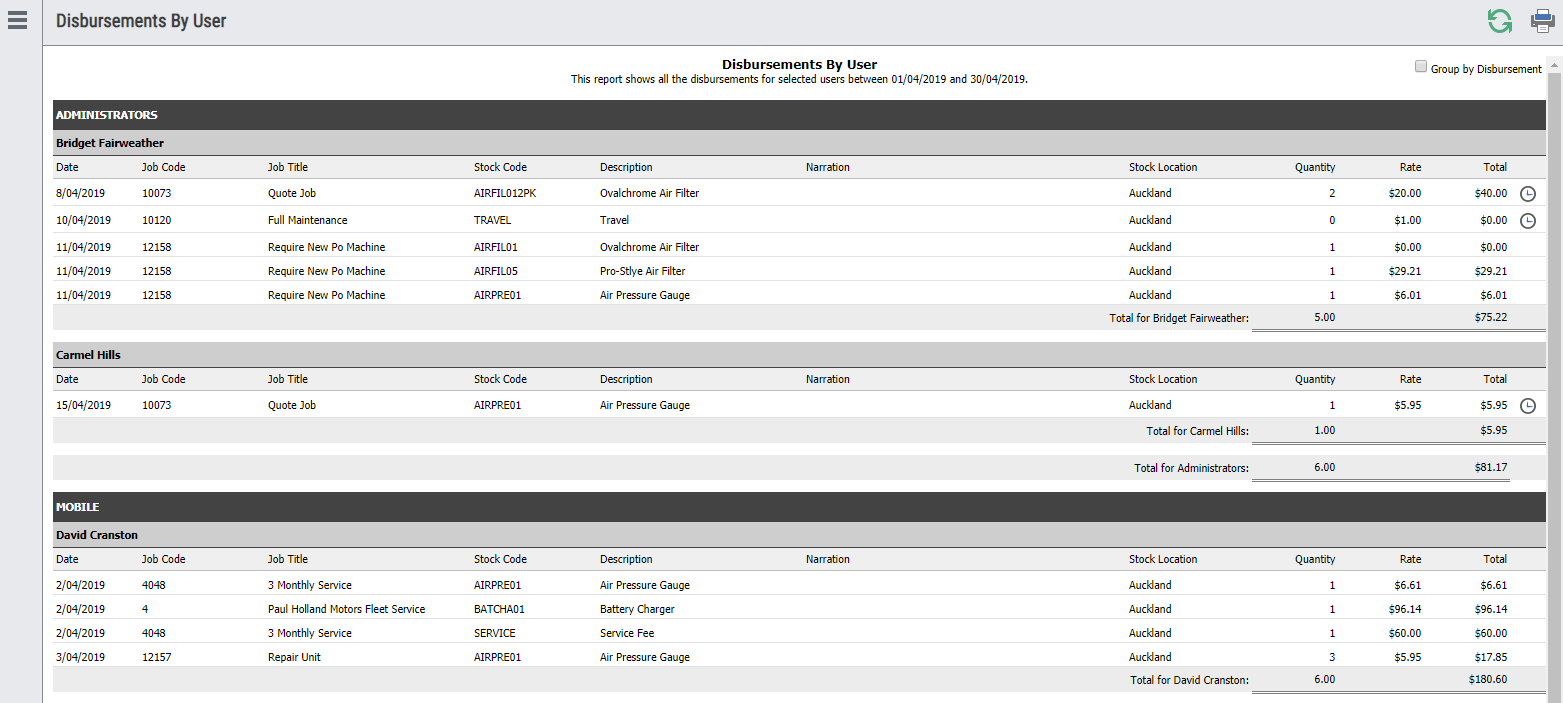
Disbursements by Job
Allows users to report upon disbursements assigned in TimeTrak per Clients Job(s) over a specified date range.
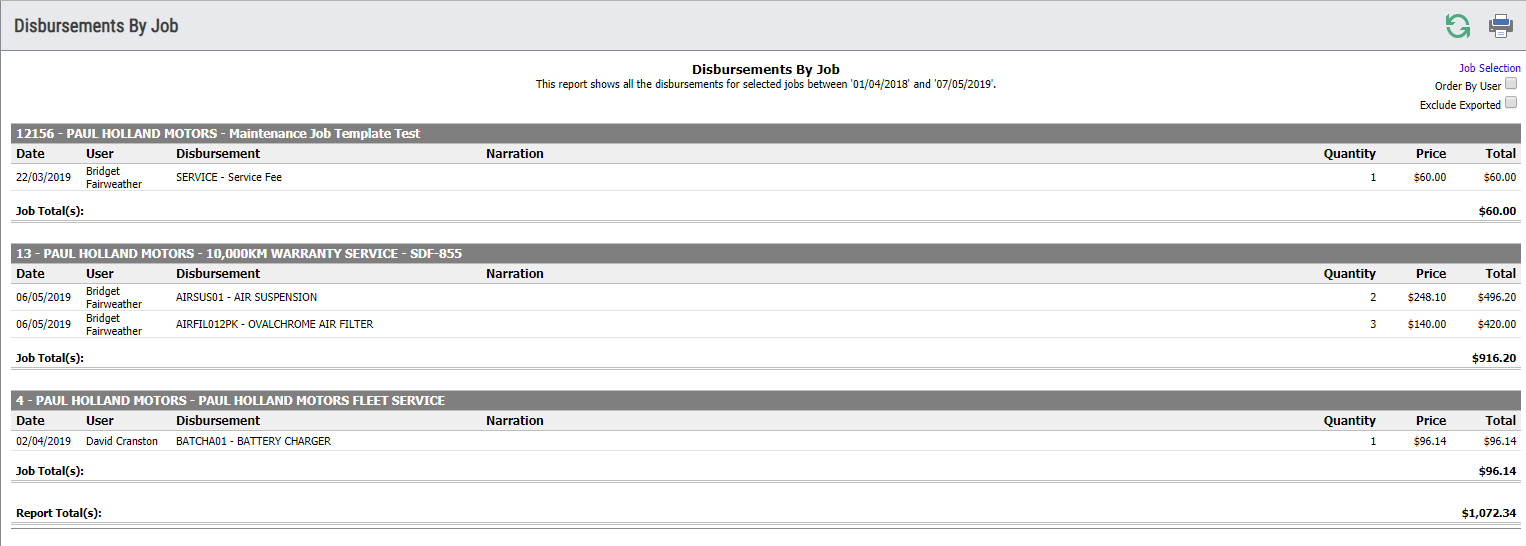
Download Whitepaper – PDF
If you have any further questions please contact the TimeTrak team via email: support@timetrak.benandhayley.nz or phone NZ: 0800 12 00 99 AU: 1800 60 80 77